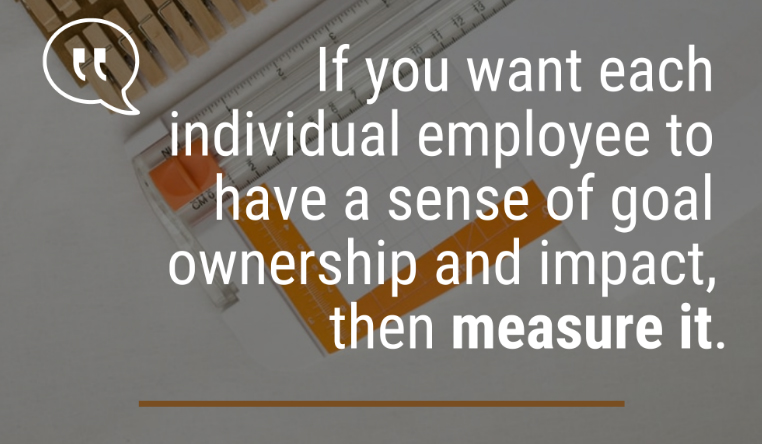There are two types of board-CEO relationships in our industry—good relationships and bad relationships. At either end of that spectrum, revamping the CEO evaluation process could help your credit union step up its game.
Here are nine steps to take:
Start early. The evaluation process can take a couple months, but if you’re planning a major overhaul of your process, it’s best to allow for several additional months on the front end. Don’t wait until the first quarter to start planning last year’s evaluation (a survey each director will complete.) Instead, have the methodology and evaluation tool already in place by December so the CEO and board have a clear, shared understanding of expectations as a new year begins.
Consider forming a committee. A lot of details and possibilities must be scrutinized in developing a new approach to evaluations. Assigning three or four directors, especially board members who have HR expertise and/or experience with executive evaluations, to handle these front-end responsibilities and submit a plan to the full board may be the most efficient route.
Review relevant documents. The strategic plan, mission and vision statements, board meeting agenda and packet, and other documents central to the CEO’s responsibilities can help identify leadership characteristics and performance metrics on which to build the evaluation instrument.
In our work with boards on CEO evaluations, the board survey typically includes 10 to 25 statements, so it takes some time for directors to consider and supply their responses. We recommend that some statements take a big-picture view rather than focusing solely on CEO performance, as in the difference between “The CEO does a good job in this area” vs. “Our credit union adheres to this best practice.”
Calibrate your calibrations. As a board, get on the same page with the CEO on the calibration methodology. Examples include the standard five-point scale (where 1 = poor and 5 = excellent) and the Likert scale, either a five-point range from strongly agree to strongly disagree or a three-point range (agree, no opinion, disagree). An alternative is a strengths-based scale, with choices ranging from “This is an outstanding strength of our CEO (or our organization)” to “Needs significant improvement.”
Satisfy the CEO’s hunger for improvement. Before directors take the survey, it can be useful to calibrate their input with this advice: Don’t give the CEO the highest possible rating on every statement. Unless your chief executive walks on water, she or he is truly outstanding in some aspects of the job and may need to improve in other areas. We’ve found that high-performing CEOs never feel like they are outstanding at everything. So when a director ranks them as outstanding at everything, the CEO’s first reaction is, “Well, that doesn’t tell me anything useful.”
Along the same lines, the board may deliberately include characteristics and skill sets the CEO does not currently possess, with the shared expectation that ratings in this area will start lower and improve over the long term.
Some directors are worried about sharing what they perceive to be negative feedback in the evaluation. But what usually happens when we describe this process to CEOs is that most of them say they will be comfortable hearing about areas where directors agree improvement is needed. Most can see that scoring five out of five across the board is both unrealistic and not helpful. Thoughtful, honest evaluations support a charge of commitment and performance improvement.
Sometimes CEOs are not excited about the prospect of receiving what they perceive as negative feedback, but they may buy into a constructive process over time. Many would prefer a more thorough review than receiving a bonus and pay increase without explanation of the basis for those compensation decisions. High-performing CEOs crave rich and relevant feedback—which puts an onus on the board to adopt a methodology that supports the development of that level of thoughtful guidance.
Build in conversations to add supporting qualitative input. After the survey is completed and compiled, a board review and discussion about the results can add useful perspectives and reflection for the CEO. Building consensus about the meaning and message of the survey data can help the board speak with one voice in delivering the evaluation and enhance board-CEO engagement without diluting the message. These conversations among directors and with the CEO actualize a final crucial element of the evaluation process—to interpret and provide actionable information.
Distinguish between the evaluation process and any bonus scorecard. These two elements have a lot in common. They should both be informed by the strategic plan. The board and CEO should agree up front on the criteria. And many credit unions have room for improvement on both fronts.
They have overlap when the bonus scorecard has a metric dictated by the results of the performance evaluation process. A crucial difference is that the performance evaluation should emphasize the long-term development of leadership capabilities and characteristics, whereas the bonus scorecard is more focused on assessing organizational results that deliver on strategic objectives over the past year. We have seen instances where a board structured the CEO bonus in ways that were inconsistent with the credit union’s strategic goals. Stated differently, the board lacked a formal mechanism to help the CEO become a better leader and partner.
Offer professional development. Developing and delivering feedback is a skill, and many board members haven’t received training on giving executive-level feedback. They don’t want to upset the chief executive or jeopardize the board-CEO relationship. They may have one or two points they want to convey, but they don’t know how to share those perspectives.
Ultimately, effective CEO evaluations are not just about a survey tool but about expert practitioners using a tool—and it takes training and practice to get to that expert level. You can have the best survey out there, but if it’s being used by a novice, or if you’re not taking a strategic approach, or if you’re not doing the necessary, inclusive groundwork—the tool’s impact is limited by its user. Think about it like this, an expert butcher can do a decent job with dull blades (think tools, processes, etc.). A novice butcher with sharp blades will still sell you meat. The best tool, the best methodology, compounds the likelihood of success in the form of a strategic process that fundamentally changes the relationship between the board and CEO.
Keep the conversation going. The goal is for the key characteristics covered in the evaluation to become front of mind and guide interactions between the board and CEO throughout the year. With a clear and shared understanding of those characteristics, directors can take note of when the CEO’s leadership reflects (or doesn’t reflect) the areas covered in the review, and they can document those observations along the way. The CEO is more likely to actively pursue areas identified as in need of improvement if he or she perceives the evaluation to be an ongoing process.
A prime outcome of effective performance evaluations is to promote learning on the part of the chief executive and the board. The CEO is continually learning to be a better leader, and directors are honing their oversight responsibilities. In our work in leadership development, we say that learning has occurred when there is a long-term shift in behavior—which seems like a worthy goal of this process. Toward that end, formal evaluations should happen at least annually, but semiannual and quarterly conversations between the board chair and CEO can help ensure continued positive progress. This helps board members keep the performance of the CEO front of mind.
Returning to our opening premise, even boards with good working relationships with their chief executives could make significant gains by improving their performance evaluation methodology. By building on already functional interactions and changing the conversation, directors and the CEO can elevate the dynamic for stronger performance across their organizations.
Peter Myers is SVP of CUESolutions provider for succession planning DDJ Myers Ltd., Phoenix. To learn more about how to implement a strategically-developed CEO performance evaluation, or if your board wants to improve its critical thinking as part of higher quality governance, reach out to DDJ Myers Ltd. at 800.574.8877.




